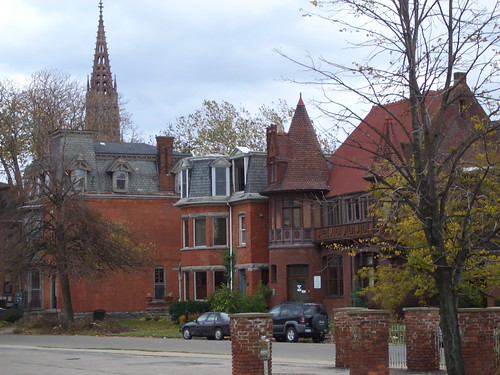Oklahoma SuperSonics
Should the public foot-the-bill for professional sports? Like it or not most major league franchises are supported and subsidized by the residents of their metropolitan area. Ususally taxes are accumulated to build or improve stadiums & ball parks. While franchise owners can generally afford astronomical payrolls for their players, they argue that the facilities must be built (in part) by the whole city.
Seattle and Sacramento bucked that trend last week. Both cities turned down proposals to raise taxes to build new homes for their Basketball teams. The Seattle vote very nearly garauntees that the SuperSonics will move by 2010 (to Oklahoma City). The fate of the Sacremento Kings is less clear.
"Public sentiment turned against the Sonics last winter when Mr. Schultz, the Starbucks chairman, demanded that the state provide $200 million to refurbish the city-owned arena. The team would have contributed $18 million." (Planetizen)
Sounds familiar, doesn't it.
"I'll gladly pay you Tuesday for a Hamburger today..." - J. Wellington Wimpy.
Wouldn't it be awfuly nice if the city paid for over 90% of your house, slashing your costs on that Half-Mil McMansion to a paltry $50,000. Of course you would have to allow guests over regularly for quality food, drinks and entertainment. $8.50 domestic beers, $45 entry fees, $3 coffee, and don't forget the merchandise to remember your visit!
It's about damn time people realized that cities shouldn't willingly fork over their tax revenues for these kinds of projects. I don't disagree that there is some public benefit to having a prominent sports venue. It makes good sense for large businesses who need to entertain clients, it can help to promote local history or industry (such as the Detroit Pistons, Pittsburgh Steelers, and the New England Patriots), and it can help to establish a place on a network of national and international destinations.
The tenor of the argument in Seattle no longer needed to "overpay" for professional sports since the city had so much already going in its favor.
“Citizens in Seattle look around and see Microsoft and Boeing doing fabulously, the Port of Seattle is booming and trade with China is going to define this city’s existence for the next 50 years,” Professor Olson said. “Seattle has said, We can be a big-league city, we can be an international city, without kowtowing to professional sports franchises.” (nytimes)
The Citizens for More Important Things led the campaign to deny public funding of a new arena for the SuperSonics. SacBee has more on Measures Q & R.


